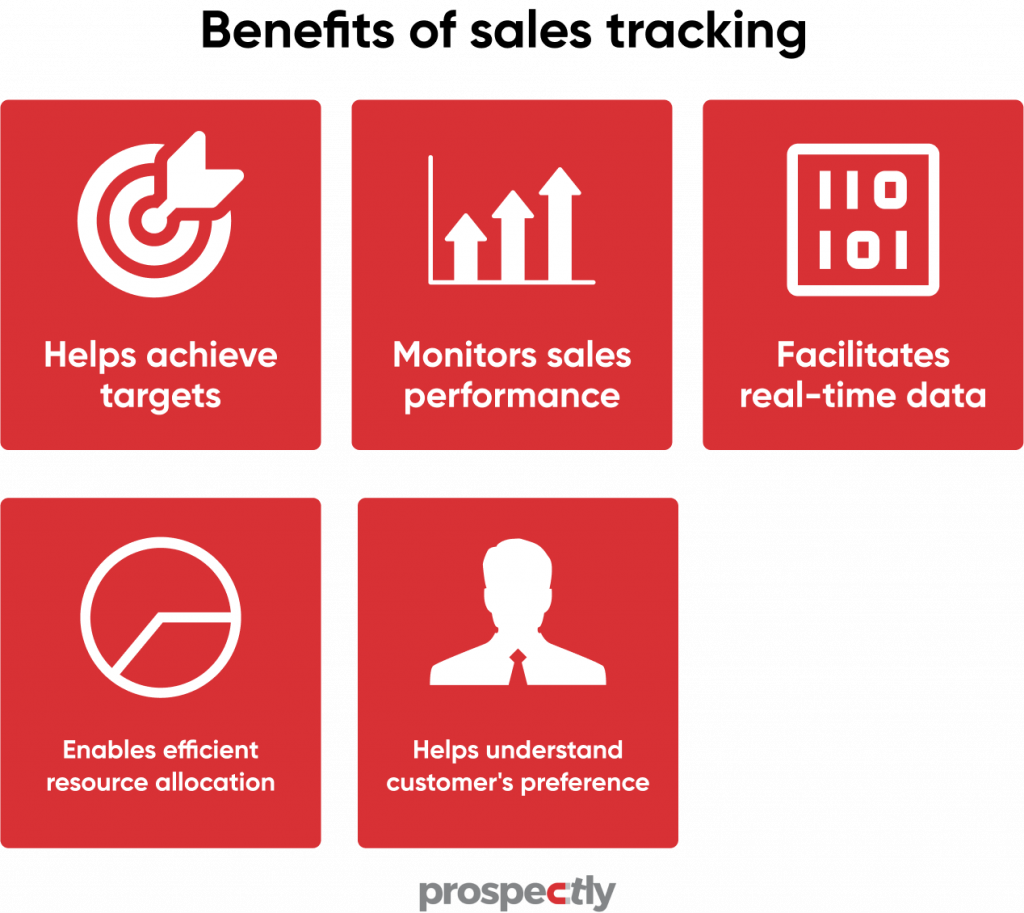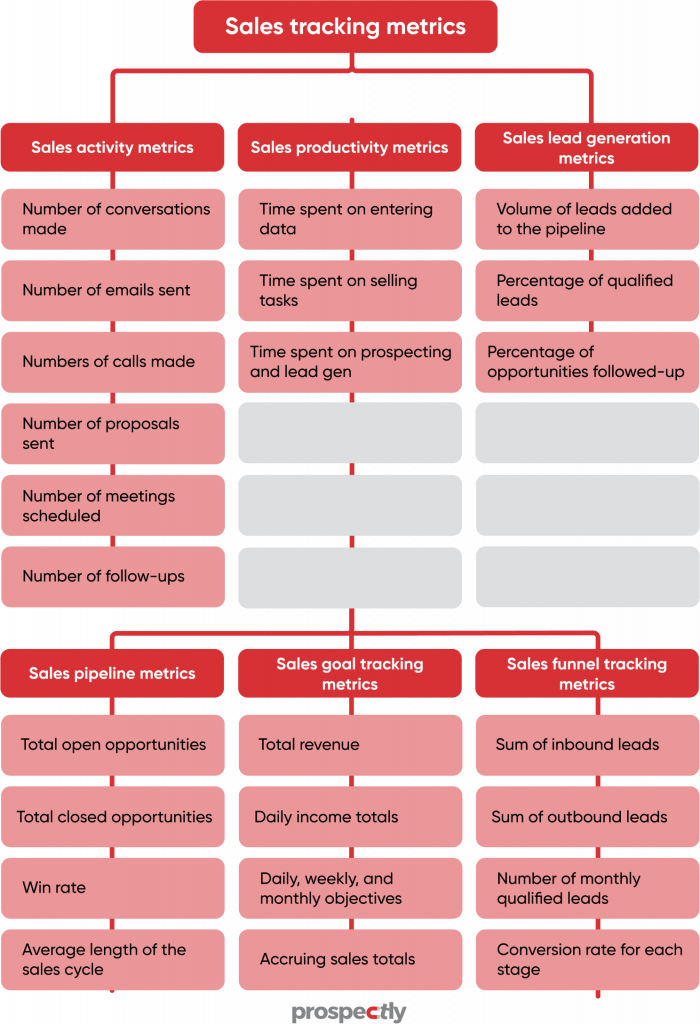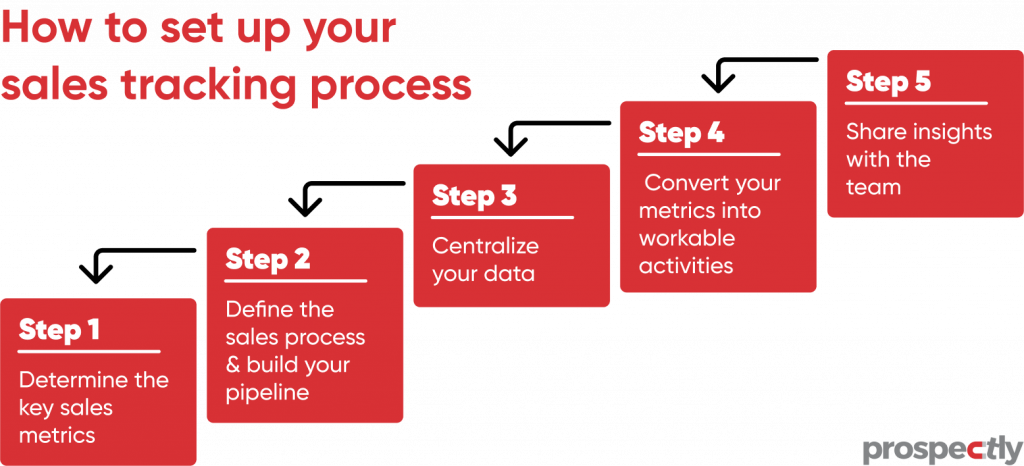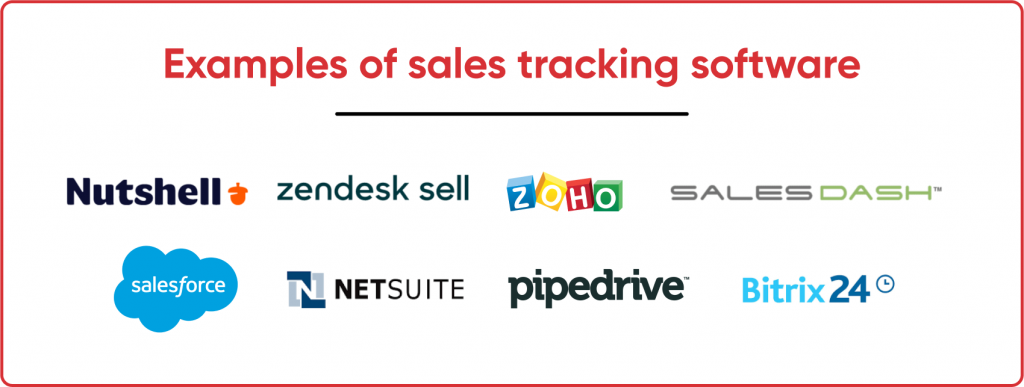One of the most critical things for a salesperson is tracking their sales. Without monitoring, it becomes hard to know what works and what doesn’t. It also becomes challenging to tell whether or not you are meeting your quotas.
Sales managers can use sales tracking to understand what their team is doing, how they perform, and if they need any help. They can also use this data to see a pattern in the sales info they prioritize.
Learn more about how you can execute sales tracking in your company in easy ways.
What is sales tracking?
Sales tracking is the process of collecting data from a company’s sales team and preparing it for analysis. Also, it involves measuring and documenting the business’ or product’s sales activity. Sales tracking helps you understand how well your deals flow in the pipeline, the sales cycle length, the win rate, etc.
Managers can conduct sales tracking in various ways such as:
– manually by gathering information from customer records, CRM, emails, and other documents.
– automatically by using online tools that track email opens, web clicks, phone calls, the pipeline, etc.
Do you need sales tracking for your sales organization?

Sales tracking has massive benefits for sales managers and reps. Check out the following reasons.
Shows sellers what they should do to achieve their goals
Sales tracking helps reps focus on the critical sales activities at every sales funnel stage. Also, they get to know what they must do to reach their objectives, tasks that are behind schedule, and how to speed up the deals.
Helps keep tabs on salespeople’s performance
Data from sales tracking is an eye-opener because it lets you know whether your salesforce understands your solution, the industry, customers, etc. Dipping sales over time may indicate that sellers can’t align buyers’ needs with your product. Or it could mean that they lack closing strategies, motivation, etc.
You can use the stats to design individualized training programs to address each salesperson’s challenges. In this way, you can hone their sales performance.
Related: Turn your sales coaching into a high performing machine
Provides real-time data to fix problems before they get out of control
An effective sales tracking system can provide sales managers with real-time data anytime and anywhere. They’ll have first-hand info regarding pipeline opportunities and sales activities.
For example, a CRM dashboard can show a few leads streaming in from the sales team at a particular time. Sales leaders can reach out to the reps to find out what’s going on to remedy the problem before it becomes too big.
Enables managers to allocate resources efficiently
Generated reports from sales tracking show leaders where they need to assign more company resources. Data could indicate that a group of sales reps in a specific region struggle with closing deals. The company can then determine the causes and deploy materials, people, or funds in low-performing areas.
Helps understand customer’s preferences
Customers’ needs change all the time, so sales tracking powered by AI gives you insight into what buyers want. Sales tracking software helps businesses tailor-make products or services to suit customers’ demands. The more your business makes buyers happy, the more it gains loyal customers.
Let’s dive into the sales tracking numbers you can monitor with these ideas in mind.
Sales tracking metrics

Measuring sales metrics allows you to see how your company performs and grows. The numbers are also handy in disqualifying prospects or grabbing opportunities before competitors do. Here are some crucial sales stats you can track.
Sales activity metrics
These numbers are within your control. Examples include:
- Number of conversations made
- Number of emails sent
- Numbers of calls made
- Number of proposals sent
- Number of meetings scheduled
- Number of follow-ups
Sales productivity metrics
They show how you plan your daily activities.
- Time spent on entering data
- Time spent on selling tasks
- Time spent on prospecting and lead gen
Sales lead generation metrics
Salespeople and managers need to know if they’re pursuing the right leads to boost conversion rates. Lead generation metrics can help you do just do that. Monitor the following stats.
- Volume of leads added to the pipeline
- Percentage of qualified leads
- Percentage of opportunities followed-up
Sales pipeline metrics
These are significant numbers that indicate how well your reps can convert prospects into customers. Examples include:
- Total open opportunities
- Total closed opportunities
- Win rate
- Average length of the sales cycle
Sales goal tracking
Metrics can also help you keep an eye on whether you’re on the right path to reach your goals. Here are some sales tracking targets you can check.
- Total revenue
- Daily income totals
- Daily, weekly, and monthly objectives
- Accruing sales totals
Sales funnel tracking
What’s happening with your sales funnel? Sales funnel tracking stats can reveal if there’s anything amiss in your sales process. Check out the numbers below.
- Sum of inbound leads
- Sum of outbound leads
- Number of monthly qualified leads
- Conversion rate for each stage
Set up your sales tracking process in 5 easy steps

How do you establish a robust sales tracking system in your company? Follow these five steps.
Step 1. Figure out the key sales tracking metrics you want to monitor
We discussed several metrics that you can observe during the sales tracking process. However, it doesn’t mean that you need to track all of them because you could be overwhelmed and find it challenging.
Choose a few sales tracking numbers, say less than ten, for a start, and they must align with your overall aim and your long-term needs.
Step 2: Map out your sales process and build your pipeline
Now that you’ve decided on the numbers you want to monitor, define the sales cycle to gain insights into the stats. You can start by analyzing your customer’s journey from awareness to buying. Next, clarify the activities for your reps to convert prospects into customers.
With the sales process in place, you can now set up your pipeline to follow your leads at each stage.
Step 3: Centralize your data
You’ve got various data sources for your sales tracking, including your CRM. To keep the process simple, collect your metrics into one source. Zapier is an excellent tool to achieve that. Or you can use sales tracking templates – we’ll discuss them later in this guide.
Step 4: Analyze and change your metrics into workable activities
Your sales tracking process is now up and running. Next, set aside a specific time in a month or quarter to examine the numbers. Then, turn them into actionable items to benefit your business and sellers.
Here are some questions to help you understand your sales tracking metrics.
- Is your team taking any specific steps that aren’t bringing you results?
- Does anyone reach their quota? Are there any that aren’t?
- Can a specific sales action be linked to the achievement of a goal?
- How does the lead process get slowed down or stifled?
- When leads are not moving forward, what actions are reps taking?
- What areas of the pipeline move leads more quickly?
- What sales activities do reps struggle with, like demos or cold calls?
- Do you see any changes in conversion rates since the changes you made?
- When does a lead exhibit signs of churning?
These questions also enable you to discover opportunities and develop proper steps to cash in on them.
Step 5: Inform your sales team about your insights
After analyzing the sales tracking stats, it’s critical to share your discoveries with other team members. These include your reps, product development, customer success, marketing, etc. As a result, everyone understands what they need to do to close more deals or improve the quality of leads, etc.
Sharing info improves work relations and collaboration among your staff. It also helps sales align with marketing for better results.
Sales tracking software and why you need it
Earlier, we said you could collect sales tracking data manually or automatically through some tools. Sales tracking software makes it easy for you to monitor, record, and analyze your sellers’ activities. Here are more reasons you need to use automation tools.
- It helps you understand customers’ behavior throughout the whole sales process.
- You can make data-based decisions to improve sales performance or buyers’ experiences.
- It enables you to develop better ways of moving your potential customers through the sales cycle. As a result, you can reduce churn rates.
- Sales tracking software minimizes human error. It offers you an accurate
record of making decisions.
- The tools help you make correct sales forecasts. You can see your pipeline value and determine future revenue growth.
- CRM sales tracking software improves relationships between your company and customers.
How to choose the best sales tracking software
Follow these suggestions to select the best sales tracking software for your small business.
The critical criteria are as follows:
- Inside sales or outside sales reporting
- Tyes of sales data you need to report on
- Track multi-channel sales activity
- Easy to build reports
- Level of customization
- Activity level reporting
- Automated notifications
- Integrate with other data sources
- Data security
- Customer reviews
- Customer support
Examples of sales tracking software

Here is a list of sales tracking tools you can try -not arranged in the order of importance.
Nutshell
Nutshell is a user-friendly sales tracking platform that allows users to view their leads and grasp their pipeline status. Also, you can use the tool to evaluate crucial metrics like revenue per sale, conversion rate, and sales activities. Nutshell has the following essential features:
- Activity report
- Loss report
- Forecast report
- Sales funnel
- Downloadable charts
- Sales report
Pricing model: Starts from $20 per month/user. Free trial available.
Zendesk Sell
As CRM sales tracking software for small businesses, Zendesk Sell lets you monitor leads, assess sales reports, and manage various accounts. It also makes it easy to collaborate between teams, perform lead scoring, and work out pipeline value. You can integrate the tool with other platforms.
Zendesk Sell has the vital features below:
- Sales analytics
- Lead management
- Lead qualification
- Sales call tracker
- Lead management
- Calendar integration
- Task and activity tracking
- Segmentation
- Email tracking
- Prospecting tools
- Product and price book
- Data import/export
- Sales dialer
Zoho CRM
Zoho CRM is another effective tool for salespeople. One distinctive feature of this software is data visualization – its colorful graphs and charts say it all. Here are more reasons for selecting this sales tracking software.
- Custom management
- Customizable dashboards
- In-depth sales analytics
- Sales forecasting
- Funnel charts
- Sales trends
- Gamification
- Automated workflows
Pricing model: Stars from $270 per month/user.
Salesdash
Small businesses that use outbound marketing as their primary strategy can use Salesdash. Compared to other CRM tools, it offers limited features, such as:
- CRM
- Task management
- Calendar
- Forecasting
- Mobile access
Pricing model: Starts from $20 per month/user. Free trial available.
Salesforce CRM
Salesforce CRM is also ideal for sales and marketing departments. It has the following sales tracking features.
- Lead management
- Sales activity
- Sales analytics
- Forecasting
- Integration with several platforms
Pricing model: Starts from $25 per month/user. Free trial available.
NetSuite CRM
If you’re looking for sales tracking for small and mid-sized businesses, NetSuite CRM is perfect for you. It has these crucial aspects:
- Lead qualification
- Marketing automation
- Document storage
- Internal chat integration
- Email marketing
Pricing model: Unavailable on the website. No free trial.
Pipedrive
Managers and sellers can use Pipedrive for sales tracking and lead generation. It offers the following essential features.
- Integration with other platforms
- Pipeline management
- Sales reports & analytics
- Monitoring communication
- Sales automation
Pricing model: Starts from $12,50 per month/user. Free trial available.
Bitrix 24
Bitrix24 is a sales tracking tool for small businesses and has several vital features.
- Sales analytics
- File sharing
- Call management
- Sales activity tracking
- Prospecting tools
Pricing model: Starts from $39 per month/5 user. Free trial available.
Sales tracker templates
If you feel that sales tracking software isn’t a top priority, you can use templates for now. You can download sales tracking templates for free and use them right away. Examples include:
Sales KPI dashboard: Excel Dashboard school
Sales pipeline template: Smarsheet
Sales pipeline: Microsoft Office
Sales forecast tracking: Microsoft Office
Sales Hacker offers various templates.
What’s next?
Sales tracking is an essential aspect of any business. It helps managers and salespeople to know how they are doing, what they need to improve on, where their strengths and weaknesses lie, etc.
You can conduct sales tracking in several ways – manually or digitally with the help of software like CRM. Sales tracking software is much more accurate and efficient than the former because it stores all numbers in one place. As a result, it becomes easier for managers to make data-driven decisions.
Related: Sales meetings: Best practice to run effective sales meetings in 10 minutes
